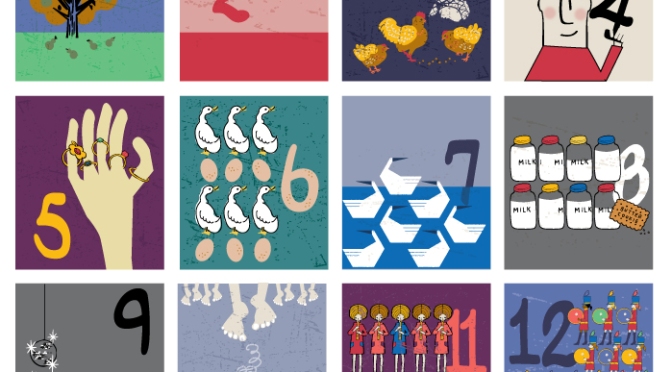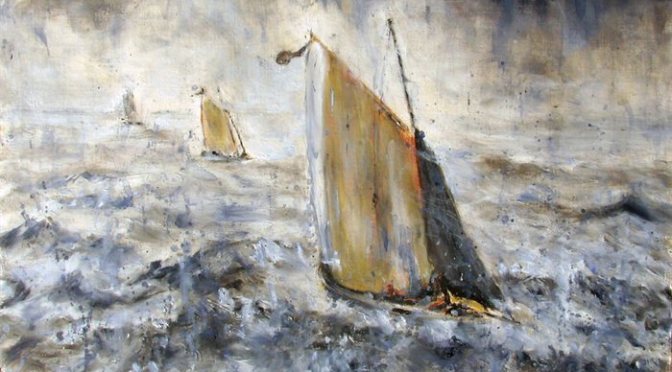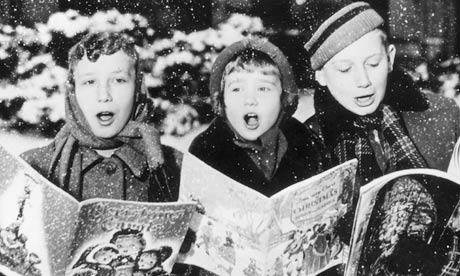(This is my fourth installment in a series I call Christmas Carol Countdown where I’m endeavoring to uncover the rich history of Christmas carols)
As I’ve said before I love carols, and it is my goal to deepen my understanding of how these carols have come about. I’ve often wondered what the first carols might have sounded like. Most of the carols we know of today were written in the 1800’s and after. Perhaps they were of humble beginnings, sounding nothing like the carols we have, or perhaps, they were glorious beyond imagination.
At first efforts, I went way way back and thought to myself, “Wouldn’t the angels who sung to the shepherds be the first carolers ever?” It’s a song. It’s about Christmas. For those of you who don’t know, it went like this:
“And suddenly there was with the angel a multitude of the heavenly host praising God saying; Glory to God in the highest, and on earth peace among those with whom he is pleased!” Luke 1:13-14
Then I realized a few things. One, this technically was not about Christmas yet, as far as the meaning of Christmas goes. It comes from “Christ Mass”; yes, mass like the boring service your grandmother used to drag you to. Over the years, we simply started calling it Christmas, because it was easier. But I guess in a way because they were singing about Jesus Christ, it might have been the first carol.
Then the other thing I realized was, according to the definition of carol, it has to be a song. Take a look at the verse again. Are the angels singing? “…heavenly host praising God saying…” (italics added) They were simply speaking! Not singing! I remember a preacher once saying, “It takes for a soul to be lost and found for it to be able to sing. Angels have never been lost, they’ve always dwelt in the presence of the Lord, and so they simply proclaim praise. We get the privilege to sing.” I’m not sure I agree 100%, but it’s an interesting notion.
So, according to the traditional definition of carol, Luke’s gospel account of the angels proclaiming Christ’s birth, indeed does not count as the first carol. In my book.
My hope then leaned on our early Church Fathers to show me the glory of the first carol. As multiple sources said, the earliest (perhaps even earlier, I don’t assume exhaustive knowledge) mentions a carol or nativity hymn in the 3rd century. Interestingly we have documents of our Church Fathers’ writings that go back even to the 2nd century, but unfortunately we only begin to hear of some sort of Christmas liturgy around the 3rd century. Our dear church fathers, Saint Hippolytus of Rome and Sextus Julius Africanus, mentioned a nativity liturgy. What they were singing…we don’t know. Sorry if I got you going there. But, thankfully around the 4th century we may have our first carol. Drum roll please.
By Saint Ephraim the Syrian, a hymn (AD 306-373)
The feast day of your birth resembles You, Lord
Because it brings joy to all humanity.
Old people and infants alike enjoy your day.
Your day is celebrated
from generation to generation.
Kings and emperors may pass away,
And the festivals to commemorate them soon lapse.
But your festival
will be remembered until the end of time.
Your day is a means and a pledge of peace.
At Your birth heaven and earth were reconciled,
Since you came from heaven to earth on that day
You forgave our sins and wiped away our guilt.
You gave us so many gifts on the day of your birth:
A treasure chest of spiritual medicines for the sick;
Spiritual light for the blind;
The cup of salvation for the thirsty;
The bread of life for the hungry.
In the winter when trees are bare,
You give us the most succulent spiritual fruit.
In the frost when the earth is barren,
You bring new hope to our souls.
In December when seeds are hidden in the soil,
The staff of life springs forth from the virgin womb
There we have it! The first extant carol of our time. It doesn’t rhyme and meter like some carols, it probably can’t be put to a catchy tune as some carols do, but it wonderfully captures the spirit and reason why we celebrate Christmas in the first place…the birth of hope for mankind.


